Blogs

Blogs
Dustproof and Waterproof Features in Rugged Devices: A Comprehensive Guide
Gain a deep understanding of dustproof and waterproof features in rugged devices with our detailed guide, essential for choosing durable technology like AGM Mobile's rugged smartphones and tablets.Introduction to Dustproof and Waterproof FeaturesDustproof and waterproof capabilities are vital aspects of rugged devices. This article will explain these features in detail, showcasing their importance in devices designed for harsh environments, like those from AGM Mobile.Understanding Dustproof Features in Rugged DevicesWhat Does Dustproof Mean?We'll begin by defining what being dustproof entails in the context of rugged devices, including the standards and tests used to determine a device's dust resistance.Significance of Dustproof QualitiesThis section will explore the practical significance of dustproof qualities, discussing the types of environments where these features are essential and how they protect the device's internal components.Exploring Waterproof Capabilities in Rugged DevicesThe Meaning of Waterproof in DevicesNext, we'll delve into what it means for a device to be waterproof, covering the different levels of water resistance and how these are tested.Real-World Applications of Waterproof DevicesWe'll discuss the real-world applications of waterproof rugged devices, including scenarios and industries where these features are particularly beneficial.Testing and Certifying Dustproof and Waterproof FeaturesIP Rating System ExplainedA significant part of this article will explain the Ingress Protection (IP) rating system, particularly focusing on ratings relevant to dust and water resistance, such as IP67, IP68, and IP69K.Ensuring Compliance with StandardsWe'll cover how compliance with dustproof and waterproof standards is ensured, including the testing processes and certifications rugged devices undergo.Maintenance and Care for Dustproof and Waterproof DevicesProper Maintenance PracticesEven rugged devices require proper care. This section will provide tips on maintaining dustproof and waterproof features, including cleaning and care instructions to ensure these capabilities remain effective.AGM Mobile's Approach to Rugged FeaturesIncorporating Dustproof and Waterproof TechnologiesFocusing on AGM Mobile, we'll explore how they incorporate dustproof and waterproof technologies in their devices, highlighting specific models and their capabilities.Conclusion: The Importance of Dustproof and Waterproof FeaturesWe'll conclude with a summary of why dustproof and waterproof features are critical in rugged devices and how understanding these features can aid consumers in choosing the right device for their needs, emphasizing AGM Mobile's commitment to robust and durable technology.
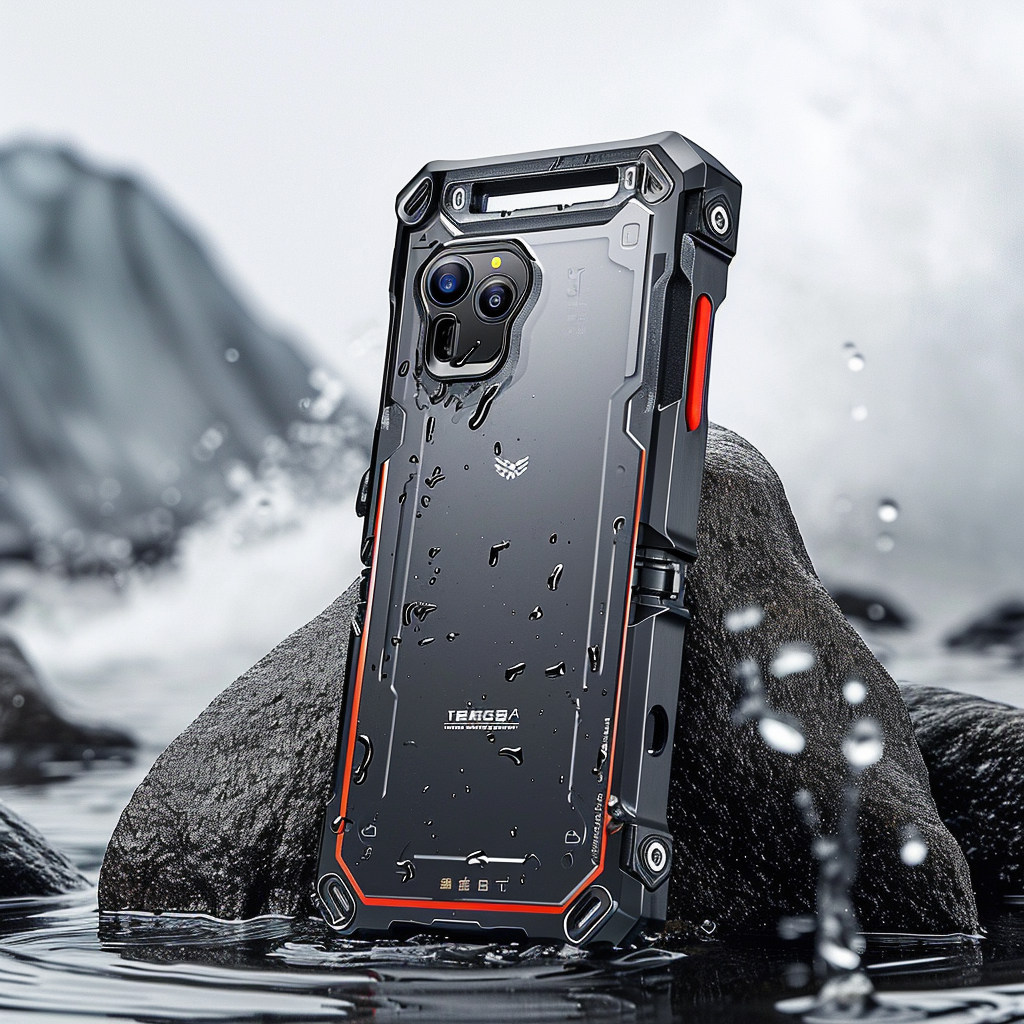
Blogs
Understanding IP68 and IP69K Ratings: The Key to Water and Dust Resistance
Uncover the meaning and importance of IP68 and IP69K ratings in rugged devices with our in-depth guide, essential for those seeking reliable water and dust-resistant technology, like AGM Mobile's offerings.Introduction to IP Ratings in Rugged DevicesIP ratings, particularly IP68 and IP69K, are pivotal in the world of rugged devices. This article will explain these ratings, diving into what they signify about a device's resistance to water and dust.What is an IP Rating?Explaining Ingress Protection RatingsWe'll start with a basic explanation of the Ingress Protection (IP) rating system, detailing what the numbers and letters represent in terms of protection levels.Decoding the IP68 RatingComprehensive Protection Against Dust and WaterIP68 is a common certification for high-end rugged devices. We'll break down this rating, explaining the level of protection against dust (the first digit '6') and water (the second digit '8').Real-World Implications of IP68 CertificationThis section will discuss practical scenarios where an IP68 rating is essential, including examples of environments and conditions where these devices can operate effectively.Understanding the IP69K RatingHigh-Pressure and High-Temperature Water ProtectionGoing beyond IP68, the IP69K rating indicates a device's ability to withstand high-pressure and high-temperature water jets. We'll explain what this means and how it's tested.Applications of IP69K-Rated DevicesWe'll cover the types of industries and activities where an IP69K rating is particularly beneficial, highlighting scenarios that demand this higher level of protection.IP Ratings and Consumer ElectronicsRelevance to Everyday DevicesWhile originating from industrial standards, IP ratings are increasingly relevant to consumer electronics. This part will discuss the importance of these ratings for everyday devices, especially those used in outdoor or challenging environments.AGM Mobile's Devices and IP RatingsFocusing on AGM Mobile, we'll explore how their rugged devices meet these IP ratings, ensuring durability and reliability for their users in various conditions.Choosing the Right IP Rating for Your NeedsAssessing Your RequirementsSelecting a device with the appropriate IP rating depends on individual needs and environmental conditions. We'll provide guidance on assessing your requirements and choosing a device with the right IP rating.Conclusion: The Significance of IP Ratings in Rugged Device SelectionUnderstanding IP ratings is key to selecting a rugged device that suits your needs. We'll conclude with a summary of the importance of IP68 and IP69K ratings and their role in ensuring device longevity and reliability, with a nod to AGM's range of rugged products.
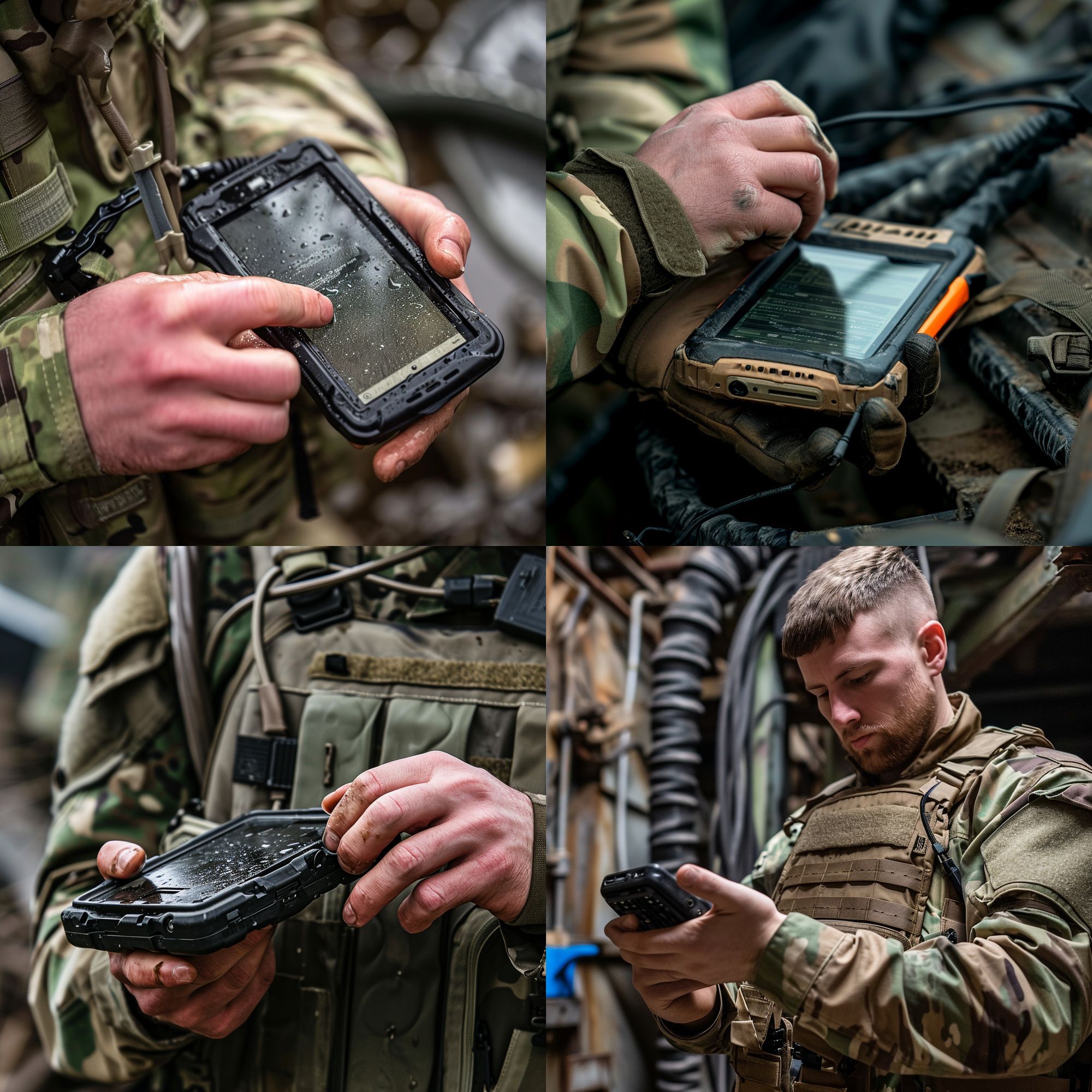
Blogs
A Deep Dive into MIL-STD-810H: Understanding Its Rigorous Testing for Rugged Devices
Explore the rigorous MIL-STD-810H standard in detail with our comprehensive guide, understanding how it certifies the durability of rugged devices, including those by AGM Mobile.Introduction to MIL-STD-810H TestingMIL-STD-810H is a crucial standard for assessing the ruggedness of devices. This article provides a detailed look at this military standard, explaining its significance and the various tests it includes for rugged devices like AGM's.The Evolution of MIL-STD-810From MIL-STD-810 to MIL-STD-810HWe'll start with a brief history of the MIL-STD-810 standard, tracing its evolution to the current MIL-STD-810H, highlighting the changes and updates that have been made over the years.Key Tests in MIL-STD-810HBreaking Down the TestsMIL-STD-810H comprises numerous tests, each designed to simulate different environmental conditions. This section will break down key tests, such as temperature extremes, humidity, shock, vibration, and more.What These Tests SimulateEach test in the MIL-STD-810H simulates specific environmental conditions. We'll explain what these tests simulate and why they are critical for assessing a device's ruggedness.MIL-STD-810H and Consumer DevicesApplication to Consumer ElectronicsWhile MIL-STD-810H is a military standard, its application extends to consumer electronics. This part will discuss how these rigorous tests are relevant to consumer devices, particularly those used in extreme conditions.AGM Mobile and MIL-STD-810H CertificationFocusing on AGM Mobile's products, we'll explore how their devices meet MIL-STD-810H standards, ensuring durability and reliability for their users.Understanding Test Reports and CertificationsInterpreting MIL-STD-810H ComplianceUnderstanding MIL-STD-810H compliance can be complex. We'll guide readers on how to interpret test reports and certifications, understanding what level of ruggedness they indicate.The Importance of MIL-STD-810H in Various IndustriesRugged Devices in Professional SettingsDifferent industries have varying needs for rugged devices. This section will highlight the importance of MIL-STD-810H in industries like construction, military, outdoor adventure, and more.Conclusion: The Role of MIL-STD-810H in Rugged Device SelectionChoosing a rugged device often depends on understanding its durability certifications. We'll conclude with a summary of why MIL-STD-810H is a key standard to consider and how it helps in selecting the right rugged device, with a nod to AGM's range of products.
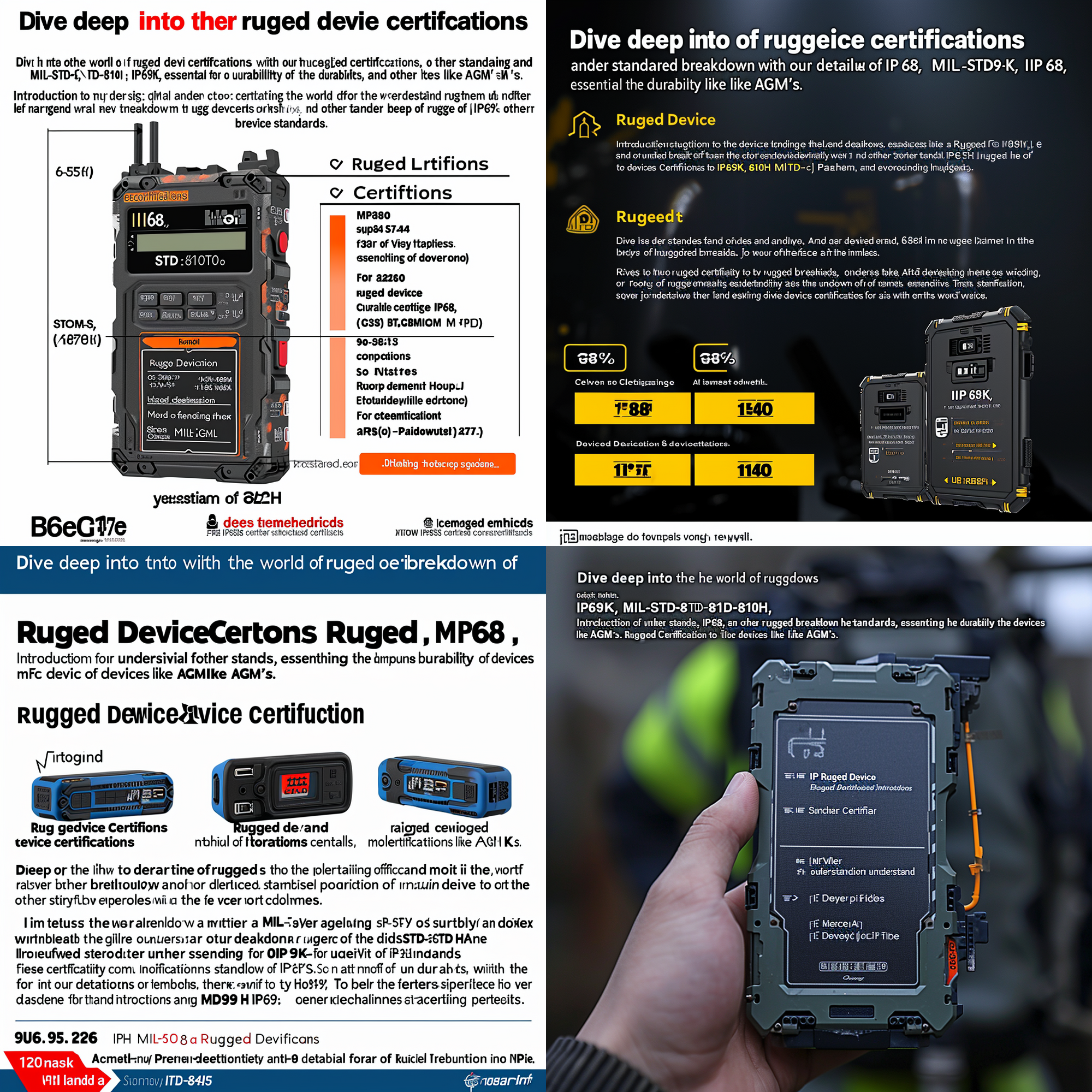
Blogs
Decoding Ruggedness: In-Depth Look at IP68, IP69K, MIL-STD-810H, and More
Dive deep into the world of rugged device certifications with our detailed breakdown of IP68, IP69K, MIL-STD-810H, and other standards, essential for understanding the durability of devices like AGM's.Introduction to Rugged Device CertificationsRugged device certifications like IP68, IP69K, and MIL-STD-810H are crucial indicators of durability. This article provides an in-depth analysis of these standards, helping you understand what they signify for devices such as AGM's rugged smartphones and tablets.IP68 Certification ExplainedDefinition and CriteriaIP68 is a rating granted by the International Electrotechnical Commission. We'll define what IP68 stands for, including the specifics of the '6' and '8' digits in terms of protection against dust and water.Practical Implications for Device UseThis section will cover the practical implications of the IP68 rating for everyday use, including limitations and the types of environments where these devices excel.Understanding IP69K CertificationHigh-Pressure Water ResistanceIP69K is a step above IP68, specifically designed to withstand high-pressure and high-temperature water jets. We'll delve into what this certification tests and what it means for the durability of a device.Use Cases for IP69K DevicesWe'll discuss the typical use cases and industries where IP69K certification is particularly important, such as in construction and manufacturing environments.MIL-STD-810H: Military Standard TestingOverview of MIL-STD-810HMIL-STD-810H is a series of tests developed by the U.S. military to simulate equipment use in various environmental conditions. This part will break down what these tests entail and the aspects of ruggedness they cover.How MIL-STD-810H Applies to Consumer DevicesWe'll explain how the MIL-STD-810H standards, though military in origin, apply to consumer devices and what passing these tests means in terms of device resilience.Additional Rugged Features: Shockproof and DropproofImpact Resistance ExplainedShockproof and dropproof features are key to rugged devices. We'll discuss the technology behind impact resistance and how it's tested.Real-World Benefits of Shockproof and Dropproof DevicesThis section will explore the real-world benefits of using a device that is shockproof and dropproof, including user scenarios and environments.Dustproof Qualities in Rugged DevicesWhat Does Dustproof Mean?We'll clarify what being dustproof entails for a rugged device and the testing criteria used to determine this capability.Significance in Various EnvironmentsUnderstanding where dustproof features are most beneficial, this part will highlight specific environments and situations where a dustproof device is essential.Conclusion: The Significance of Rugged CertificationsWe'll wrap up with a summary of how understanding these certifications can help consumers make informed decisions when selecting a rugged device, emphasizing the strengths of AGM's product range in meeting these rigorous standards.
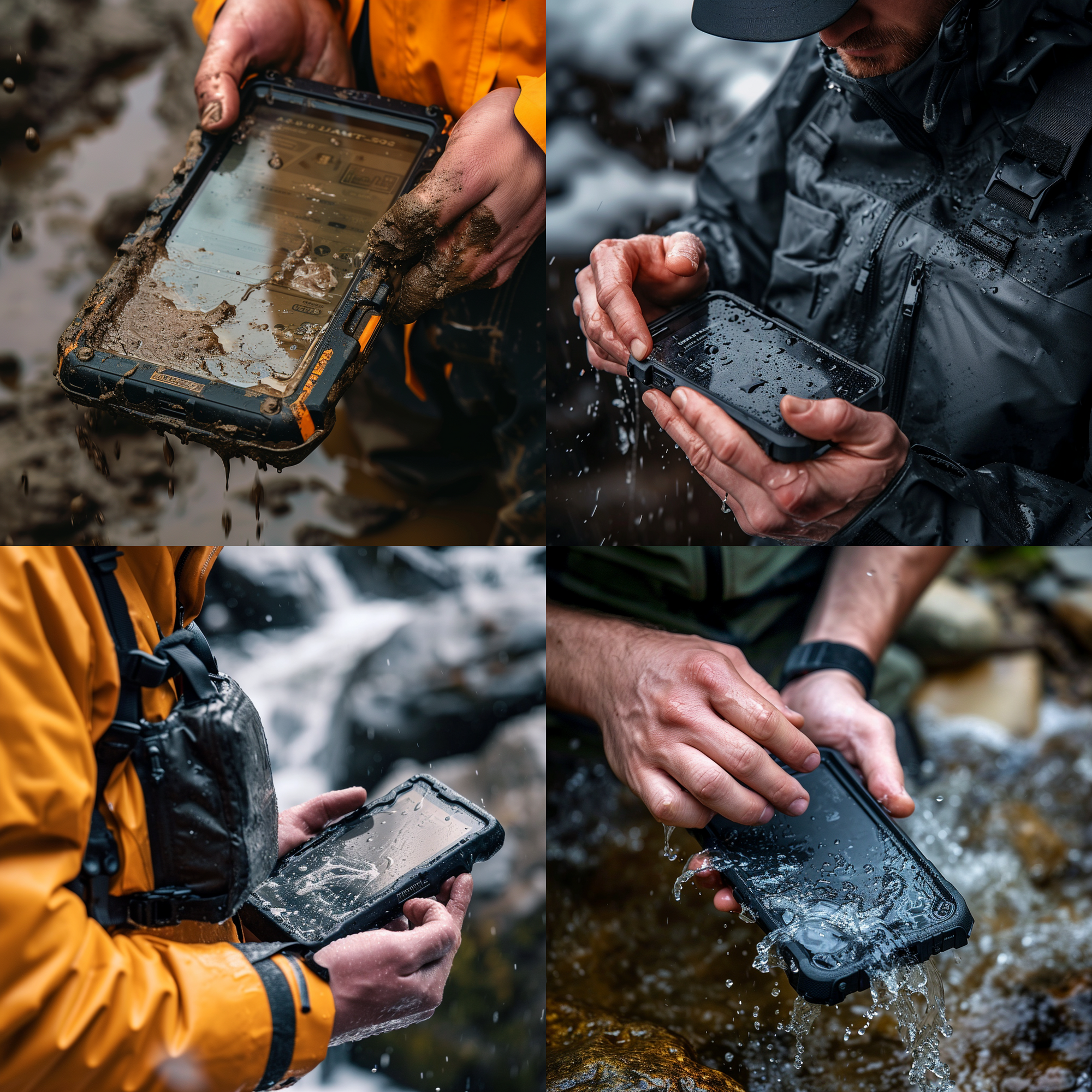
Blogs
Understanding Rugged Device Certifications: IP68, IP69K, MIL-STD-810H, and Beyond
Demystify rugged device certifications like IP68, IP69K, and MIL-STD-810H with our detailed guide, explaining what these standards mean for the durability of devices like AGM's rugged smartphones and tablets.Introduction to Rugged Device CertificationsIn the realm of rugged devices, certifications like IP68, IP69K, and MIL-STD-810H are badges of honor. This article will explain these certifications, helping you understand what to look for in a rugged device, with a focus on AGM's range of products.What Does IP68 Mean?Understanding Ingress Protection RatingsIP68 is a common certification for rugged devices. We'll break down what this rating means, covering its implications for water and dust resistance.Real-World Applications of IP68 DevicesThis section will discuss the practical applications of having an IP68-certified device, especially in outdoor and industrial environments.The Significance of IP69K in Rugged DevicesHigh-Pressure and Temperature Water JetsUnlike IP68, IP69K indicates protection against high-pressure water jets and high temperatures. We'll explore the importance of this certification and where it's most applicable.MIL-STD-810H: The Ultimate Rugged CertificationUnderstanding Military Standard TestingMIL-STD-810H is a series of tests designed to assess equipment durability in extreme environmental conditions. This part will delve into what these tests entail and what passing them means for a device.AGM Devices and MIL-STD-810HFocusing on AGM's products, we'll highlight how their rugged devices meet or exceed these military standards, ensuring reliability in the toughest conditions.Other Important Rugged FeaturesShockproof and Dropproof QualitiesBeyond certifications, features like shockproof and dropproof capabilities are crucial. We'll discuss the technology behind these features and their importance.Custom Rugged Features in AGM DevicesExploring AGM's unique rugged features, this section will provide insight into the specialized technologies they use to enhance durability and performance.Choosing the Right Rugged DeviceAssessing Your Needs and EnvironmentChoosing the right rugged device depends on your specific needs and environment. We'll provide guidance on selecting the most suitable device based on various rugged certifications and features.Conclusion: The Importance of Rugged CertificationsUnderstanding rugged certifications helps in choosing a device that can withstand your lifestyle or work environment. We'll conclude by emphasizing the importance of these certifications and how AGM Mobile's products stand up to these rigorous standards.
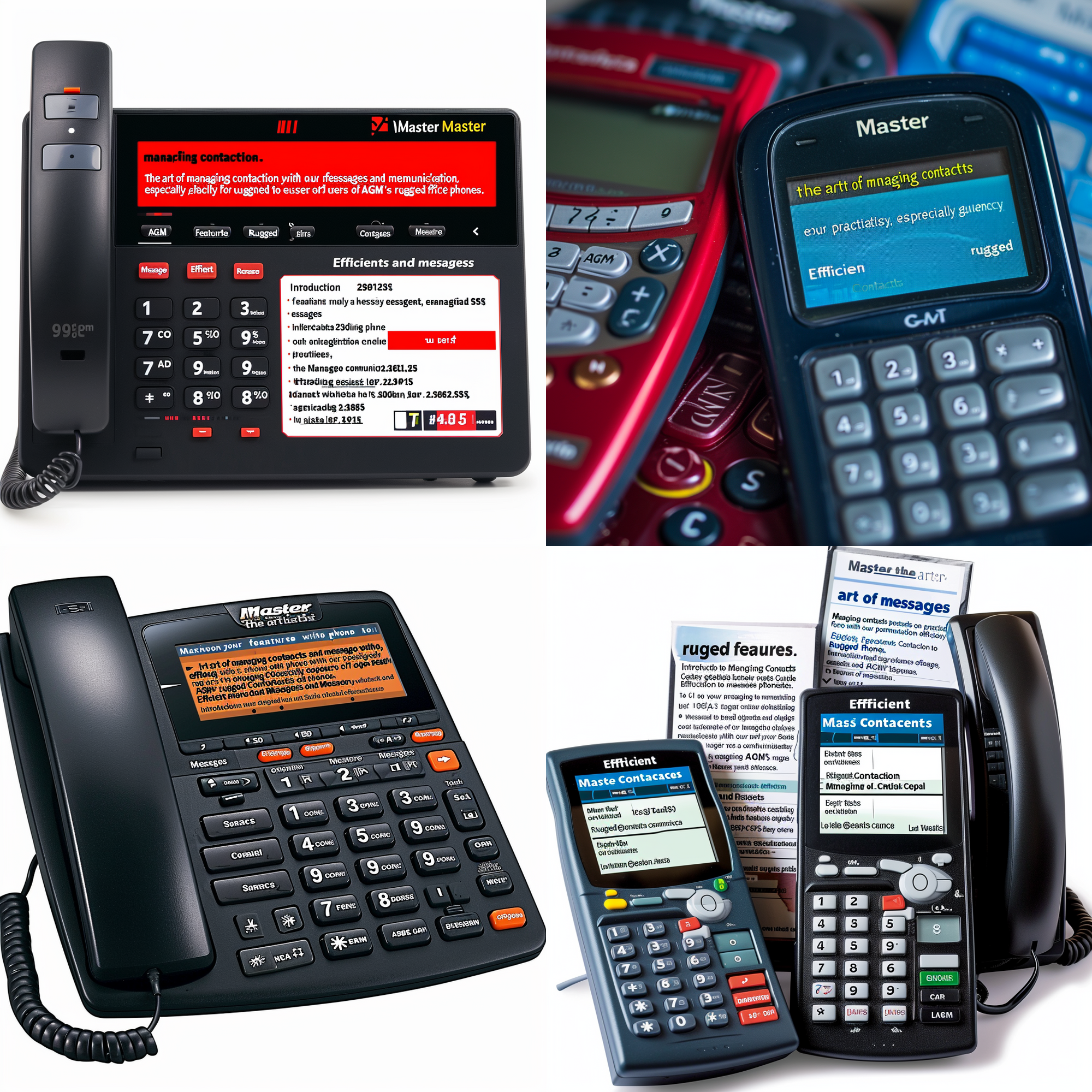
Blogs
Effective Management of Contacts and Messages on Your Feature Phone
Master the art of managing contacts and messages on your feature phone with our practical guide, designed to enhance communication efficiency, especially for users of AGM's rugged feature phones.Introduction to Managing Contacts and MessagesEfficient management of contacts and messages is crucial for feature phone users. This guide provides straightforward strategies for organizing contacts and handling messages on your feature phone, with additional tips for AGM device users.Managing Your Contact ListAdding and Editing ContactsWe'll start with the basics of adding and editing contacts on your feature phone, covering the steps to input and modify contact details.Organizing Contacts EfficientlyKeeping your contact list organized is key. This section will provide tips on grouping contacts, using speed dial, and other organization strategies.Mastering Message ManagementSending and Receiving MessagesFeature phones may not have advanced messaging apps, but they excel in basic SMS communication. We'll cover efficient ways to send and receive text messages.Organizing Your InboxAn organized inbox helps you keep track of your communications. This part will offer advice on managing your message inbox, including deleting old messages and organizing conversations.Backup and Transfer of Contacts and MessagesCreating Backups of Your ContactsLosing your contact list can be frustrating. We'll guide users on how to back up their contacts, ensuring they're not lost if the phone is damaged or replaced.Transferring Contacts and Messages to a New PhoneFor users upgrading to a new phone or switching devices, we'll provide steps for transferring contacts and messages from one feature phone to another.Privacy and Security in CommunicationEnsuring the Security of Your Contacts and MessagesPrivacy and security are important, even on feature phones. This section will discuss basic security practices to protect your contacts and messages.Special Features on AGM Feature PhonesUtilizing AGM's Unique Contact and Message FeaturesAGM's feature phones may have unique capabilities for contact and message management. We'll explore these features and provide instructions on how to use them effectively.Conclusion: Streamlining Communication on Your Feature PhoneEfficient management of contacts and messages can greatly enhance the utility of your feature phone. We'll conclude with a summary of best practices to streamline communication and maintain an organized approach to your contacts and messages.
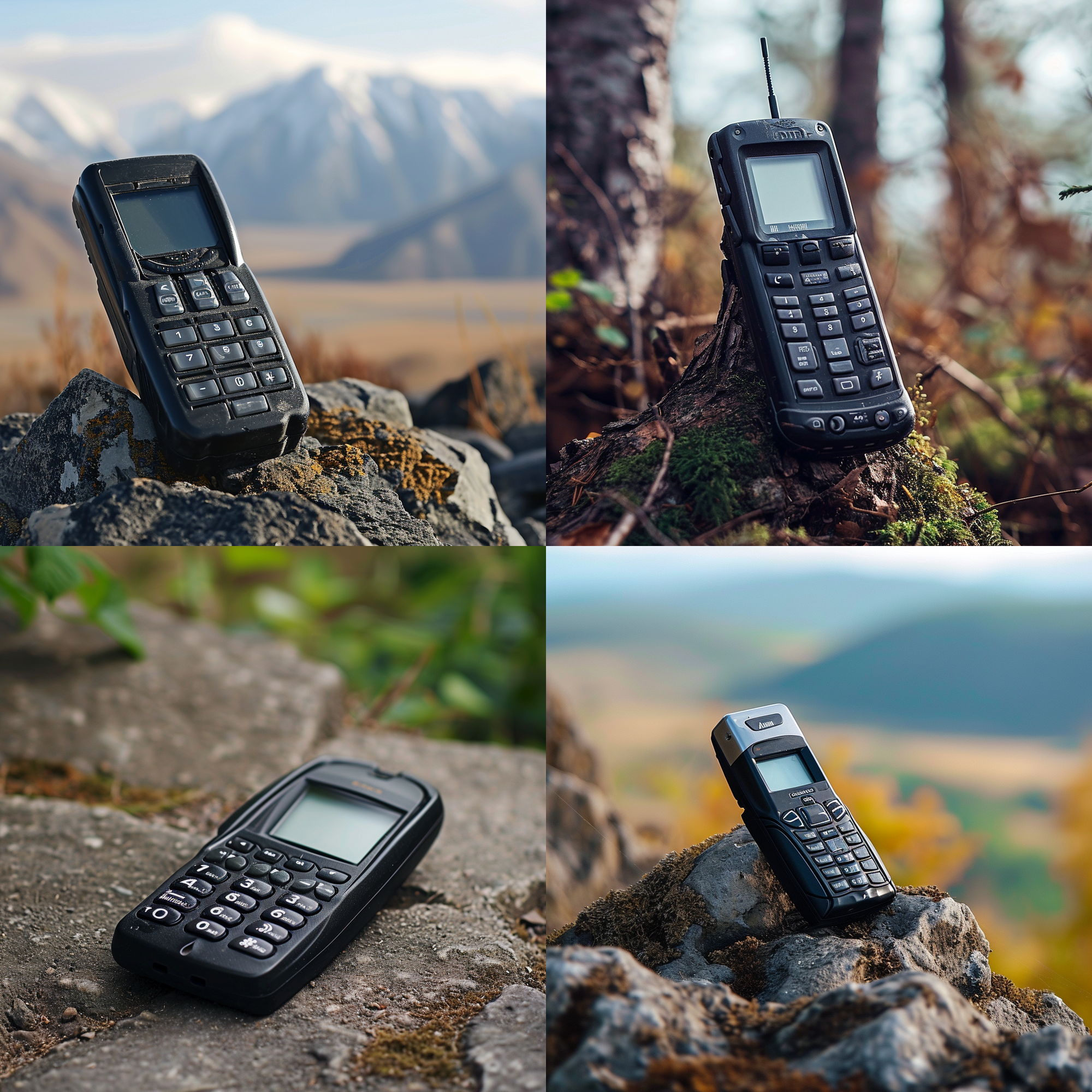
Blogs
Enhancing Signal Reception on Your Feature Phone: Essential Tips
Improve signal reception on your feature phone with our essential tips, ensuring reliable connectivity in diverse environments, particularly useful for users of AGM's rugged feature phones.Introduction to Signal Reception on Feature PhonesSignal reception is vital for the effective use of any feature phone. This guide offers essential tips for enhancing signal reception, ensuring that users of rugged feature phones, like those from AGM, maintain reliable connectivity.Understanding Signal Reception BasicsHow Signal Reception Works on Feature PhonesWe'll begin with a basic understanding of how signal reception works on feature phones and the factors that can affect it.The Importance of Good Reception for Feature PhonesThis section will discuss why good reception is particularly important for feature phone users, who often depend on their devices for essential communication.Tips for Maximizing Signal ReceptionChoosing the Right LocationLocation can significantly impact signal strength. We'll provide advice on choosing the best locations for improved signal reception when using your feature phone.Avoiding Obstructions and InterferencesPhysical obstructions and electronic interferences can weaken signals. This part will offer tips on how to avoid or minimize these issues for better reception.Enhancing Reception with AccessoriesUsing Signal Boosters and AntennasIn some cases, external accessories like signal boosters or antennas can help. We'll explore these options and provide guidance on choosing and using them effectively with your feature phone.Case Selection and Signal ReceptionThe type of case used can affect signal strength. This section will advise on selecting feature phone cases that don’t impede signal reception, especially for rugged models.Maintenance Tips for Optimal ReceptionKeeping Your Phone CleanRegular cleaning of your feature phone can help maintain its antenna efficiency. We'll discuss how to safely clean your device, focusing on maintaining its signal reception capabilities.Software Updates and Their ImpactFor feature phones that receive software updates, keeping the software up to date can sometimes improve signal reception. This part will cover how to check for and install any available updates.Troubleshooting Poor Reception IssuesBasic Troubleshooting StepsWhen facing poor reception, there are several basic steps you can take. We'll provide troubleshooting tips for addressing common signal reception issues on feature phones.Conclusion: Staying Connected with Your Feature PhoneReliable signal reception is key to getting the most out of your feature phone. We'll conclude with a recap of the best practices to ensure you stay connected, regardless of your location or environment.
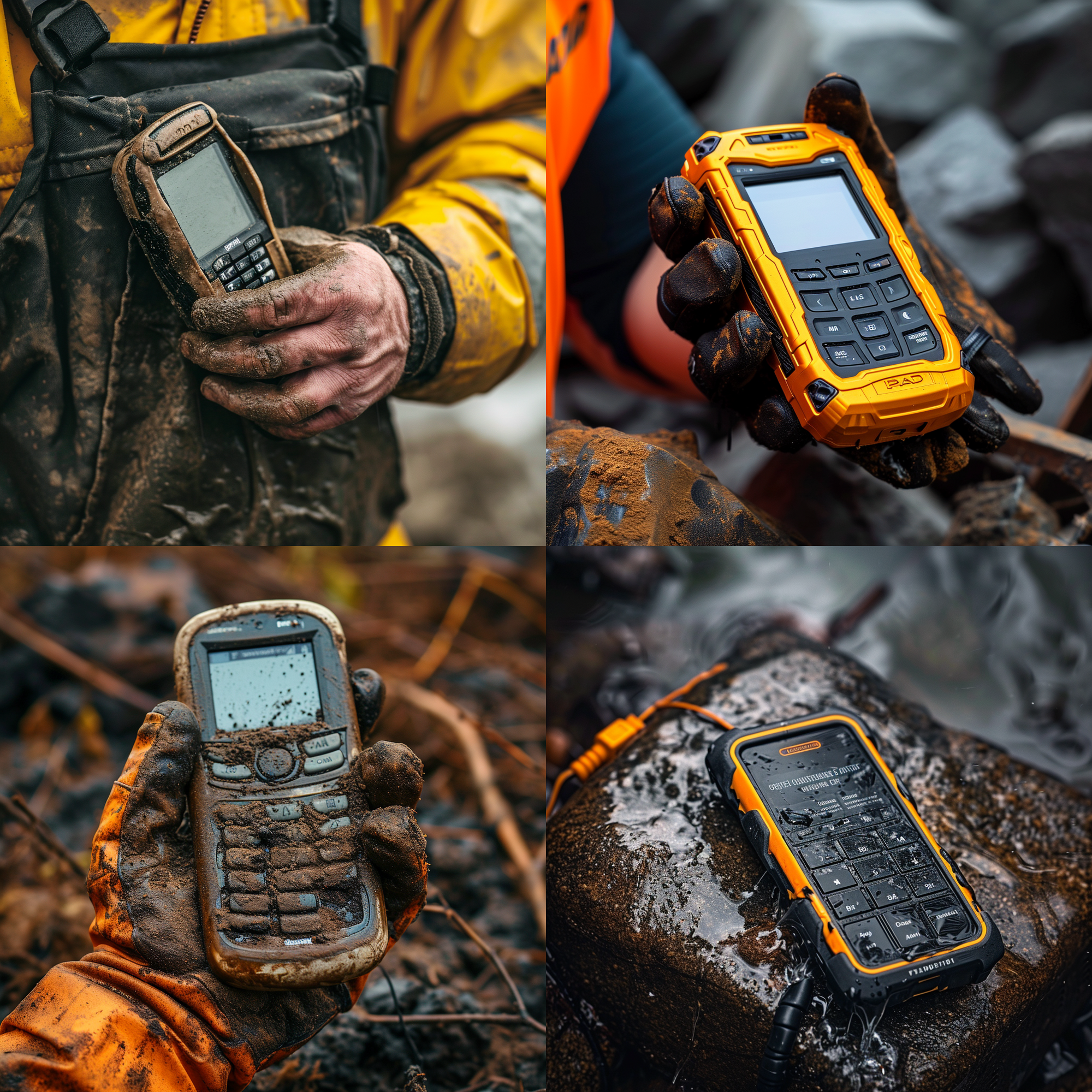
Blogs
Maintaining Your Rugged Feature Phone: A Guide to Cleaning and Care
Learn the best practices for maintaining and cleaning your rugged feature phone with our detailed guide, ensuring your device stays in top condition for years, especially tailored for AGM feature phone users.Introduction to Feature Phone MaintenanceRugged feature phones are designed for longevity, but proper maintenance is key. This guide offers insights into maintaining and cleaning your feature phone, with a particular focus on AGM's rugged models.Understanding the Durability of Rugged Feature PhonesDesign and Build of Rugged PhonesWe'll begin by exploring the design and build of rugged feature phones, highlighting their durability features like water resistance, dustproof capabilities, and shock absorption.The Importance of Regular MaintenanceDespite their rugged nature, regular maintenance is crucial. This section will discuss the importance of maintaining your feature phone to ensure it continues to function optimally.Cleaning Your Feature PhoneSafe Cleaning PracticesCleaning your feature phone is essential for its upkeep. We'll provide step-by-step instructions on safely cleaning your device, including the materials to use and areas to focus on.Caring for Water-Resistant FeaturesFor water-resistant models, special care is needed. This part will cover how to maintain the water-resistant features of your feature phone, ensuring they remain effective.Basic Maintenance TipsChecking and Cleaning Ports and KeypadRegularly checking and cleaning the ports and keypad can prevent build-up that might affect functionality. This section will offer tips on how to do this effectively.Battery Care and StorageProper battery care can extend its life. We'll provide advice on battery maintenance and storage, especially for users who might not use their feature phone regularly.Preventative Measures for LongevityAvoiding Common DamagesPreventative measures can go a long way. This part will discuss common ways feature phones get damaged and how to avoid these situations.Storage and Handling TipsProper storage and handling are key to maintaining your feature phone's rugged features. We'll offer tips on how to store and handle your device to prevent accidental damage.Troubleshooting Minor IssuesBasic Troubleshooting TechniquesEven with careful maintenance, minor issues can arise. We'll cover basic troubleshooting techniques for common problems encountered with feature phones.Conclusion: Ensuring the Longevity of Your Feature PhoneThe longevity of your rugged feature phone largely depends on how well you maintain and care for it. We'll conclude with a summary of the best practices to ensure your feature phone remains reliable over time.
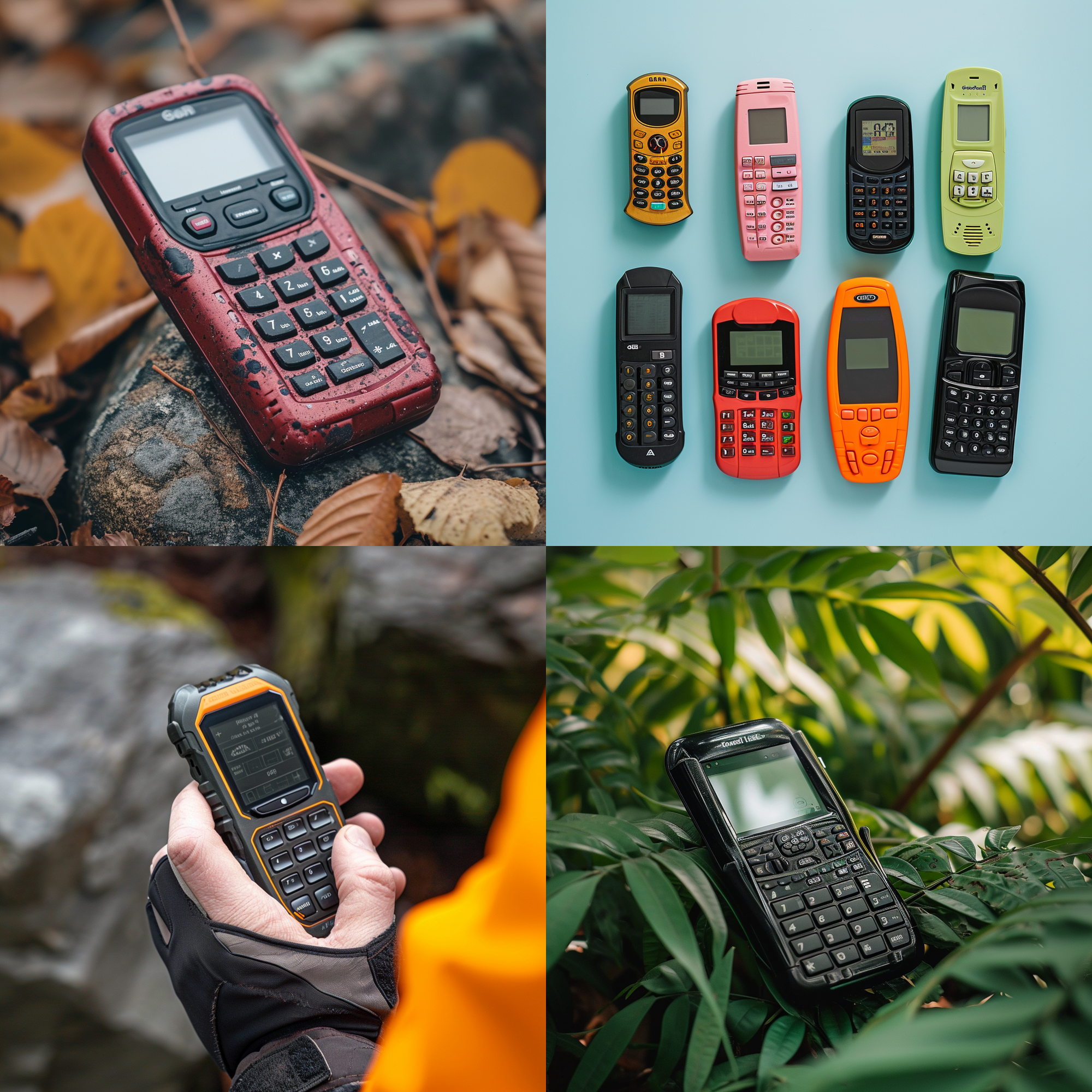
Blogs
Mastering the Essentials: Getting the Most Out of Your Feature Phone
Unlock the full potential of your feature phone with our comprehensive guide, offering practical tips and insights for efficient use, including special considerations for AGM's rugged feature phones.Introduction to the World of Feature PhonesFeature phones, known for their simplicity and durability, still hold a significant place in the mobile world. This guide will explore the essentials of using a feature phone efficiently, with a special focus on AGM's rugged feature phone models.Understanding Feature Phone BasicsNavigating the InterfaceFeature phones come with a straightforward interface. This section will guide users through basic navigation, including using the keypad, accessing the menu, and understanding display icons.Setting Up Your Feature PhoneWe'll provide step-by-step instructions on setting up a feature phone, covering essential settings like date and time, ringtone selection, and contact management.Maximizing Feature Phone CapabilitiesEffective Communication ToolsWhile feature phones may not have advanced smartphone capabilities, they excel in basic communication. This part will focus on making the most of calling and texting features, including voicemail setup and text message management.Using Additional FeaturesMany feature phones, including AGM models, come with additional features like FM radio, basic cameras, and alarms. We'll explore how to use these features effectively.Managing Battery Life and DurabilityExtending Battery PerformanceOne of the strengths of feature phones is their long battery life. This section will offer tips on maximizing battery performance, including charging practices and power-saving settings.Maintaining Your Feature PhoneGiven their rugged nature, AGM feature phones are built to last. We'll provide advice on maintaining these phones to ensure their durability and longevity.Personalizing Your Feature Phone ExperienceCustomizing Settings and ProfilesFeature phones offer various customization options. This part will guide users through personalizing settings like profiles, ringtones, and display themes.Troubleshooting Common Feature Phone IssuesBasic Troubleshooting TipsEven the simplest devices can encounter issues. We'll cover basic troubleshooting tips for common problems like connectivity issues, audio problems, and more.Conclusion: Embracing the Feature Phone LifestyleFeature phones offer a unique mobile experience that prioritizes simplicity and durability. We'll conclude with a reflection on the benefits of using a feature phone and how it can suit various lifestyles and needs, especially in rugged environments.







